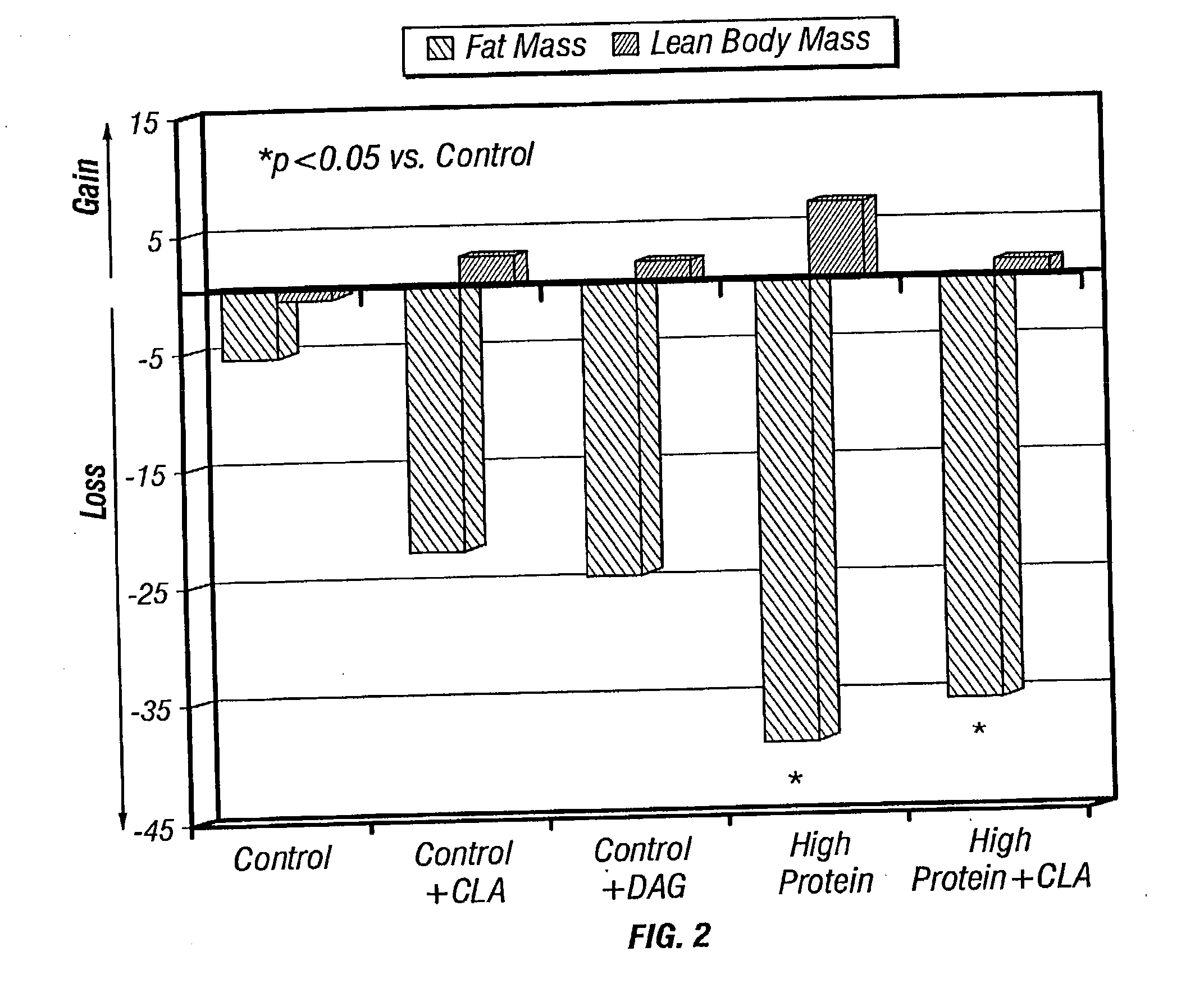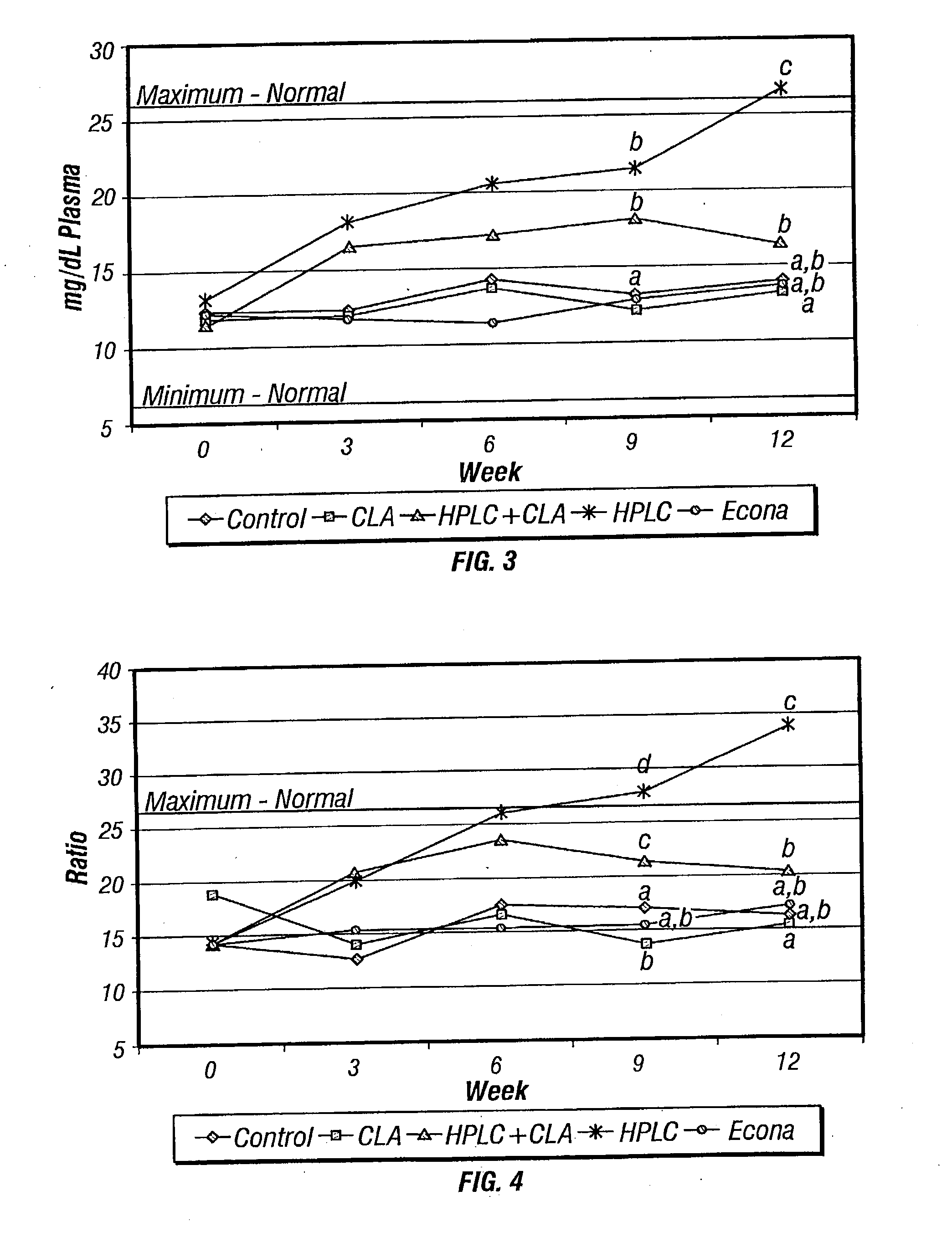Weight management system for obese animals
a weight management system and animal technology, applied in the field of pet food, can solve the problems of overweight dogs having an increased risk of cats extremely vulnerable to weight disorders, and overweight dogs have an increased risk of developing transitional cell carcinoma of the bladder, etc., to achieve the effect of optimizing the body composition of domestic animals
- Summary
- Abstract
- Description
- Claims
- Application Information
AI Technical Summary
Benefits of technology
Problems solved by technology
Method used
Image
Examples
example
[0055] Five test diets (n=10 obese dogs / diet) were tested for a 12 week period. The five diets included: (1) Control (28% protein); (2) Control+Conjugated Linoleic Acid (CLA); (3) Control+diacylglycerides (DAG); (4) High protein (50% protein); and (5) High protein+CLA. Dogs were fed at a slight caloric restriction (15% caloric restriction based on baseline caloric intake) to encourage weight loss. Lean body mass was determined by isotope ratio mass spectrometry (IRMS) in deuterium oxide (D2O), and the fat mass was calculated by subtracting the lean body mass from body weight.
[0056] As illustrated in the chart of FIG. 1, the results showed a significantly greater weight loss in the dogs fed the high protein diets as compared to the control diet and the other test compound diets, with or without the functional ingredient, CLA.
[0057] The observed weight loss of the dogs on all five diets is due to a significant loss of fat mass (FIG. 2) while sparing lean body (i.e., muscle) mass. Th...
PUM
| Property | Measurement | Unit |
|---|---|---|
| weight loss | aaaaa | aaaaa |
| weight | aaaaa | aaaaa |
| lean body mass | aaaaa | aaaaa |
Abstract
Description
Claims
Application Information
 Login to View More
Login to View More - R&D
- Intellectual Property
- Life Sciences
- Materials
- Tech Scout
- Unparalleled Data Quality
- Higher Quality Content
- 60% Fewer Hallucinations
Browse by: Latest US Patents, China's latest patents, Technical Efficacy Thesaurus, Application Domain, Technology Topic, Popular Technical Reports.
© 2025 PatSnap. All rights reserved.Legal|Privacy policy|Modern Slavery Act Transparency Statement|Sitemap|About US| Contact US: help@patsnap.com



